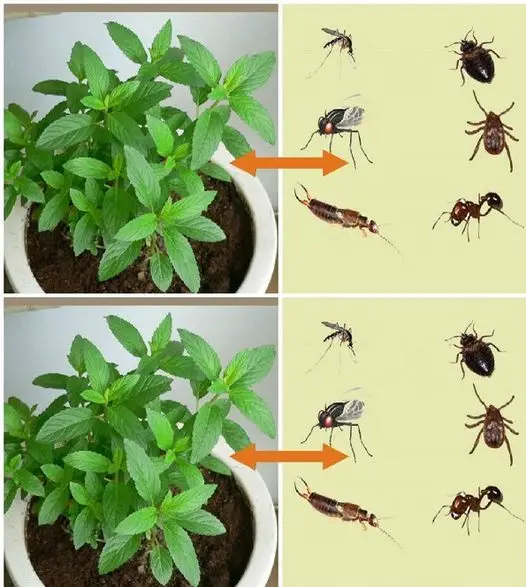
Using plants to naturally repel bugs and mosquitoes is an eco-friendly and effective way to keep pests at bay while adding beauty to your garden. Here are 16 plants known for their ability to repel insects:
1. Lavender (Lavandula spp.)
- Repels: Mosquitoes, moths, fleas, flies
- Additional Benefits: Fragrant, attracts pollinators, has calming properties
2. Citronella Grass (Cymbopogon nardus)
- Repels: Mosquitoes, flies
- Additional Benefits: Citronella oil extracted from the grass is a common ingredient in mosquito repellents.
3. Marigolds (Tagetes spp.)
- Repels: Mosquitoes, aphids, whiteflies, nematodes
- Additional Benefits: Bright flowers, deter pests from nearby plants
4. Lemon Balm (Melissa officinalis)
- Repels: Mosquitoes, gnats
- Additional Benefits: Lemon-scented foliage, attracts pollinators
5. Basil (Ocimum basilicum)
- Repels: Flies, mosquitoes, thrips
- Additional Benefits: Culinary herb, aromatic foliage
6. Rosemary (Rosmarinus officinalis)
- Repels: Mosquitoes, moths, flies
- Additional Benefits: Culinary herb, fragrant foliage
7. Peppermint (Mentha x piperita)
- Repels: Ants, spiders, mosquitoes
- Additional Benefits: Culinary herb, aromatic leaves, soothing scent
8. Catnip (Nepeta cataria)
- Repels: Mosquitoes, flies, cockroaches
- Additional Benefits: Attracts cats (which may deter other pests)
9. Chrysanthemums (Chrysanthemum spp.)
- Repels: Ants, roaches, ticks, fleas, bedbugs, mosquitoes
- Additional Benefits: Colorful flowers, contains pyrethrin (a natural insecticide)
10. Lemongrass (Cymbopogon citratus)
- Repels: Mosquitoes, ticks, fleas, gnats
- Additional Benefits: Culinary herb, lemon-scented foliage
11. Garlic (Allium sativum)
- Repels: Mosquitoes, aphids, cabbage loopers, cabbage worms
- Additional Benefits: Culinary herb, pungent odor deters pests
12. Sage (Salvia officinalis)
- Repels: Moths, mosquitoes, cabbage moths
- Additional Benefits: Culinary herb, aromatic foliage
13. Thyme (Thymus vulgaris)
- Repels: Mosquitoes, flies, cabbage worms
- Additional Benefits: Culinary herb, aromatic foliage
14. Eucalyptus (Eucalyptus spp.)
- Repels: Mosquitoes, flies, ticks
- Additional Benefits: Aromatic foliage, eucalyptus oil has insect-repellent properties
15. Petunias (Petunia spp.)
- Repels: Aphids, leafhoppers, tomato hornworms
- Additional Benefits: Colorful flowers, easy to grow
16. Nasturtiums (Tropaeolum majus)
- Repels: Aphids, whiteflies, squash bugs
- Additional Benefits: Edible flowers and leaves, attract pollinators
Tips for Using Pest-Repelling Plants:
- Strategic Planting: Place these plants near outdoor seating areas, windows, and doorways to maximize their effectiveness.
- Crushed Leaves: Crush the leaves of some plants, like basil and lemon balm, and rub them on your skin as a natural insect repellent.
- Companion Planting: Plant pest-repelling plants alongside vegetables and other susceptible plants to deter pests and attract beneficial insects.
- Regular Maintenance: Keep plants healthy by providing adequate sunlight, water, and soil nutrients to optimize their pest-repelling properties.
By incorporating these plants into your garden landscape, you can create a natural barrier against pests while enjoying their beauty and fragrance.
